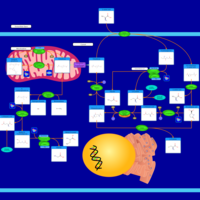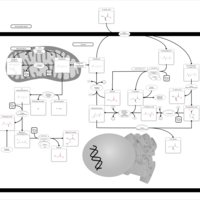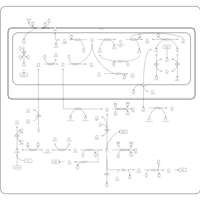| Glutathione metabolism |    |
| Glycine, serine and threonine metabolism |    |
| Cysteine Metabolism |    |
| Transcription/Translation |    |
| Taurine and Hypotaurine Metabolism |    |
| Pantothenate and CoA Biosynthesis |    |
| Methionine Metabolism |    |
| Glutamate Metabolism |    |
| Chlorothiazide Action Pathway |    |
| Polythiazide Action Pathway |    |
| Methyclothiazide Action Pathway |    |
| Bumetanide Action Pathway |    |
| Bendroflumethiazide Action Pathway |    |
| Quinethazone Action Pathway |    |
| Ethacrynic Acid Action Pathway |    |
| Hydrochlorothiazide Action Pathway |    |
| Cyclothiazide Action Pathway |    |
| Metolazone Action Pathway |    |
| Hydroflumethiazide Action Pathway |    |
| Indapamide Action Pathway |    |
| Furosemide Action Pathway |    |
| Torsemide Action Pathway |    |
| Trichlormethiazide Action Pathway |    |
| Chlorthalidone Action Pathway |    |
| Triamterene Action Pathway |    |
| Amiloride Action Pathway |    |
| Spironolactone Action Pathway |    |
| Eplerenone Action Pathway |    |
| 2-Hydroxyglutric Aciduria (D And L Form) |    |
| 5-Oxoprolinuria |    |
| Cystathionine Beta-Synthase Deficiency |    |
| Dihydropyrimidine Dehydrogenase Deficiency (DHPD) |    |
| Gamma-Glutamyltransferase Deficiency |    |
| Glucose Transporter Defect (SGLT2) |    |
| Hartnup Disorder |    |
| Iminoglycinuria |    |
| Lysinuric Protein Intolerance |    |
| S-Adenosylhomocysteine (SAH) Hydrolase Deficiency |    |
| Methionine Adenosyltransferase Deficiency |    |
| Glycine N-methyltransferase Deficiency |    |
| Non Ketotic Hyperglycinemia |    |
| Dimethylglycine Dehydrogenase Deficiency |    |
| 4-Hydroxybutyric Aciduria/Succinic Semialdehyde Dehydrogenase Deficiency |    |
| Sarcosinemia |    |
| Glutathione Synthetase Deficiency |    |
| Hyperinsulinism-Hyperammonemia Syndrome |    |
| Methylenetetrahydrofolate Reductase Deficiency (MTHFRD) |    |
| Hypermethioninemia |    |
| Homocarnosinosis |    |
| Homocysteine Degradation |    |
| Kidney Function |    |
| Dimethylglycine Dehydrogenase Deficiency |    |
| Hyperglycinemia, non-ketotic |    |
| Beta-mercaptolactate-cysteine disulfiduria |    |
| 5-oxoprolinase deficiency |    |
| Gamma-glutamyl-transpeptidase deficiency |    |
| Gamma-cystathionase deficiency (CTH) |    |
| Homocystinuria, cystathionine beta-synthase deficiency |    |
| Succinic semialdehyde dehydrogenase deficiency |    |
| Homocystinuria-megaloblastic anemia due to defect in cobalamin metabolism, cblG complementation type |    |
| Blue diaper syndrome |    |
| Lysinuric protein intolerance (LPI) |    |
| 3-Phosphoglycerate dehydrogenase deficiency |    |
| Cystinosis, ocular nonnephropathic |    |
| Cystinuria |    |